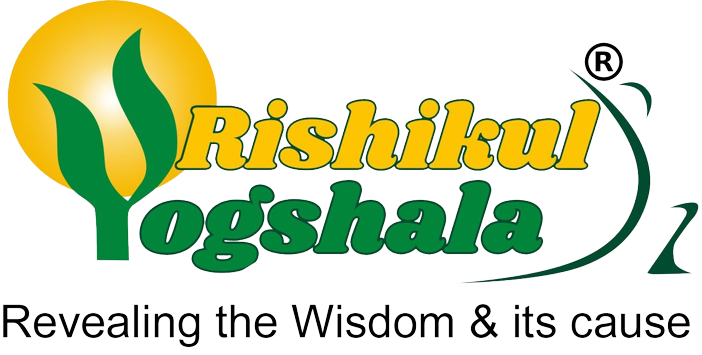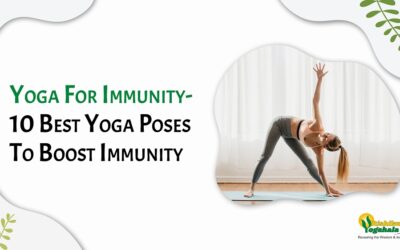Ashtanga Namaskara is a traditional pose with a combination of breathing patterns, yoga poses, and specific gaze points. This yoga posture warms the body and further prepares it for activities. To dig deep into this practice, stick with the blog to know its benefits and how to do’s.
The full ashtanga system practiced with devotion leads to freedom within one’s heart.
Yoga is a spiritual, physical, and mental practice that first originated in ancient India. It is a practice that strives to join the body, mind, and spirit together. Each different types of yoga have their practices and emphasis, and the same is with Ashtanga Namaskara. Ashtanga Namaskara, which is also known as Eight-Limbed, presents the sixth posture in the Surya Namaskara. It is practiced to pay respect to the elders or the Gods, as a gesture of accepting the blessing. While practicing this pose, the body needs to be in contact with the floor at eight points, which are; chin chest, two hands, two knees, and two feet. This asana has many benefits attached to it as it strengthens the shoulders and arms, helps in silencing the mind, as the breath is held in, and improves the flexibility and mobility of your spine.
Hence, this is a really great posture for arm balancing. Even though it appears simple but is an intensely great preparatory pose. Read below to know more about its benefits and how it is to be done correctly.
How to do Ashtanga Namaskara
- Start with the plank pose, making sure your shoulders are directly above your wrists.
- On an exhalation, ground the knees to the floor, by making sure that the toes are tucked under.
- Then again after an exhalation, bring the chest and finally the forehead to the floor, coming into ashtanga position, keeping the abdomen and hips off the floor.
- If you can reach the floor, then touch the chin to the ground as it will benefit you more, and breath into the body.
- Continue taking deep breaths while you balance your body on your arms, chest, and knees.
- If you wish to, then you can also chant a mantra which is “Om Pushne Namaha” it means the greeting to the body that gives the quality.
- Hold the pose for a few breaths and then release from the pose by dropping yourself to the mat.
Contraindications of Ashtanga Namaskara
- A person who is suffering from an injury to any part of the body or is recovering from surgery should avoid practicing this pose.
- Pregnant women should also avoid the practice of Ashtanga Namaskara as the exercise creates too much pressure on the abdominal area.
- People who suffer from Blood Pressure or have a Migraine should also avoid this exercise since the breathing can be reduced when trying to hold the body in balance.
Top 5 Health Benefits of Ashtanga Namaskara
- Improves the Flexibility and Posture
The intense practice of Ashtanga Namaskara which is a balancing pose creates a lot of pressure on the muscles around the spine to hold the body in balance. With the active use and stimulation of these muscles, it increases the range of movement, thereby strengthening the complete back. And because the body reaches the floor at eight distinct points, the natural shape of the backbone is also maintained. If you got back pain, then this asana can do wonders to your body. - It Purifies your Body from the Outside to Inside
The main aim of this posture is to cleanse and purify a person from the outside to inside. To fulfill bodily wellness, you have to put your complete focus on your mind by removing all the clutter that is inside. Once your soul and mind attains calmness and happiness, it is only then that your body will begin to reap the fruit of this posture. Like it is said, Ashtanga Namaskara is not just a form of exercise; it is more of a mind and body mindfulness technique. With this asana, you will achieve a healthier body, a peaceful mindset, and added energy. - It Enhances your Life and Body Awareness
Yoga plays the role through full attainment of self-awareness. Just like in Ashtanga Namaskara, you need to be entirely present during this asana as with awareness the abdomen is pulled in to help strengthen the lower back and hips to remain in balance, which further helps in stimulating the Manipura Chakra. When the Manipura Chakra is active, it helps to activate the internal organs keeping trace of digestion. Bodily and mental awareness helps to engage the center muscles that help learners to go farther into their yoga practice. Awareness will result in a calmer, balanced, and happier stance in life. These benefits may seem uncertain now, but upon practicing Ashtanga Namaskara, you will encounter how these terms mean. - It Prepares you Towards a Healthier and Better Lifestyle
Ashtanga Namaskara is one of the beginner’s yoga poses that aid in warming up your body for more complex yoga practice. With its addition to increasing blood flow, toning up the muscles, building confidence, keeping the mind stable, and other body advantages, this asana attracts yogis towards a healthier and happier way of living. It does not only provide physical benefits, but it holistically removes the toxins from your mind and body. Ashtanga Namaskara is not difficult to practice and, to start; you can easily follow the chin-chest-knee position in your living area. - It Stretches and Strengthens your Muscles as well as you Mind
The Eight Limbed Pose helps in stretching the soles, toes, lower back, hips, and neck. While the hips and lower back are stretched, the abdomen, core, knees, and chest are strengthened. And the rest of the chest and chin on the floor puts pressure on the shoulders and arms, to help strengthen the triceps and biceps.
The most important thing in this posture is the pranayama. Getting the right breathing makes it an effective stress buster exercise. This holistic practice of Ashtanga will give you anger control and mindfulness benefits. Eliminating the negative vibes from your body and mind makes these possible.
The benefits of this pose give you the perfect path to grow as a person and to let go of the harmful and negative vibes disturbing your living. Make Ashtanga Namaskara a daily habit to keep a constant flow throughout the body, which guides you to live a more peaceful and positive life.




